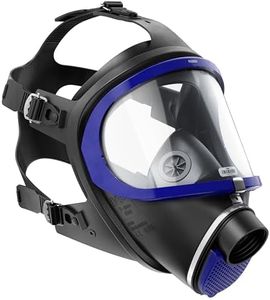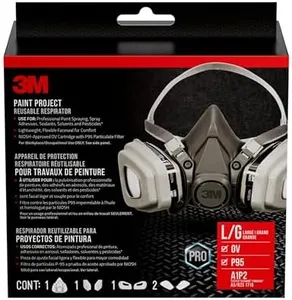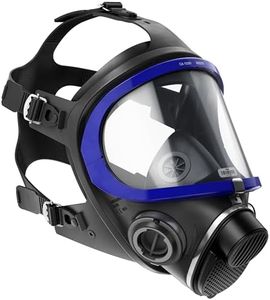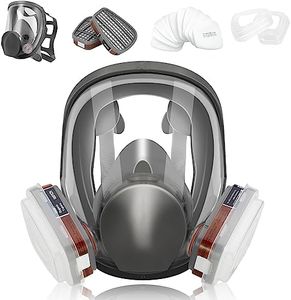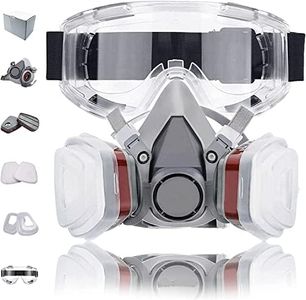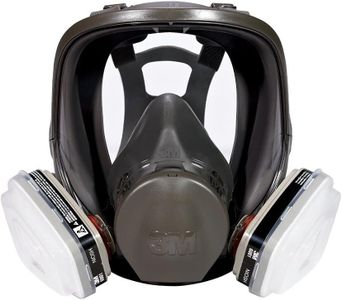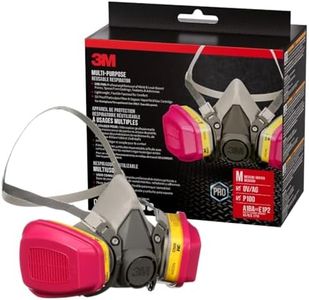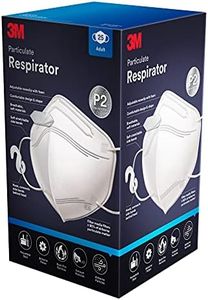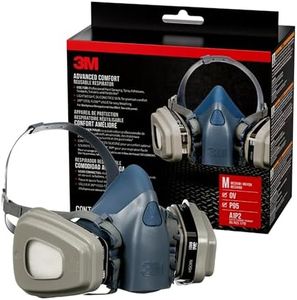We Use CookiesWe use cookies to enhance the security, performance,
functionality and for analytical and promotional activities. By continuing to browse this site you
are agreeing to our privacy policy
10 Best Respirator Mask For Mold
From leading brands and best sellers available on the web.Buying Guide for the Best Respirator Mask For Mold
Choosing the right respirator mask for dealing with mold is crucial for your health and safety. Mold can release spores and toxic particles that are dangerous to breathe in, especially during cleaning or remediation work. To ensure you’re properly protected, you need a respirator mask that can effectively filter out harmful materials while also fitting comfortably so you can wear it for the duration of your task. It's important to understand what features truly matter in a respirator mask to make a smart and safe choice.Type of RespiratorThe type of respirator refers to the general design and intended use of the mask. For mold, you typically see either disposable (like N95 or P100) or reusable half-face/full-face respirators. Disposable masks are lightweight and good for short projects, while reusable masks can offer a tighter seal and are designed for repeated use. Choosing between them depends on how often you plan to work around mold—occasional tasks might be fine with disposables, while larger or ongoing jobs benefit from reusable options.
Filter RatingFilter rating indicates how well the mask filters out airborne particles, such as mold spores. Ratings like N95, N100, P95, or P100 show both filtration capability and resistance to oil-based particles. For mold, at least an N95 rating is recommended, but higher numbers (like N100 or P100) filter out even more particles. If you want maximum protection, choose the highest rating that fits your work (N100 or P100); for lighter, less frequent projects, N95 may be enough.
Fit and SealFit and seal refer to how closely the mask fits your face and whether it prevents unfiltered air from leaking in. A good fit is essential so mold spores don’t get around the mask. Masks come in different sizes and sometimes have adjustable straps or features to improve the seal. If you have a smaller or larger face, or if you wear glasses, look for models known for good adjustability and compatibility. Always check that your mask forms a secure seal before starting work.
Comfort and BreathabilityComfort and breathability are about how easy the mask is to wear and breathe through, especially during longer tasks. Some masks are more padded, have soft edges, or include an exhalation valve to reduce heat and moisture buildup. If you anticipate wearing the mask for extended periods, prioritize models with features that enhance comfort. For shorter projects, basic models may suffice, but always make sure you're not struggling to breathe with the mask on.
Reusability and MaintenanceThis aspect involves whether the mask is single-use or designed for ongoing use with replaceable filters. Disposable masks are tossed after use, while reusable masks need cleaning and new filters over time. If you have recurring mold problems or bigger projects, a reusable mask can be more practical. Make sure you're comfortable with basic cleaning and filter replacement: reusable masks offer ongoing protection but need regular care for proper function.
Valve for ExhalationSome respirator masks include an exhalation valve that helps release breath more easily, reducing heat and moisture inside the mask. This feature is helpful if you expect to wear the mask during strenuous activity or for long periods, as it keeps you cooler and more comfortable. However, a valve can allow unfiltered air out, which isn’t an issue for personal protection from mold but matters if stopping virus spread is also a concern. For mold work, a valve is generally a plus for comfort.

